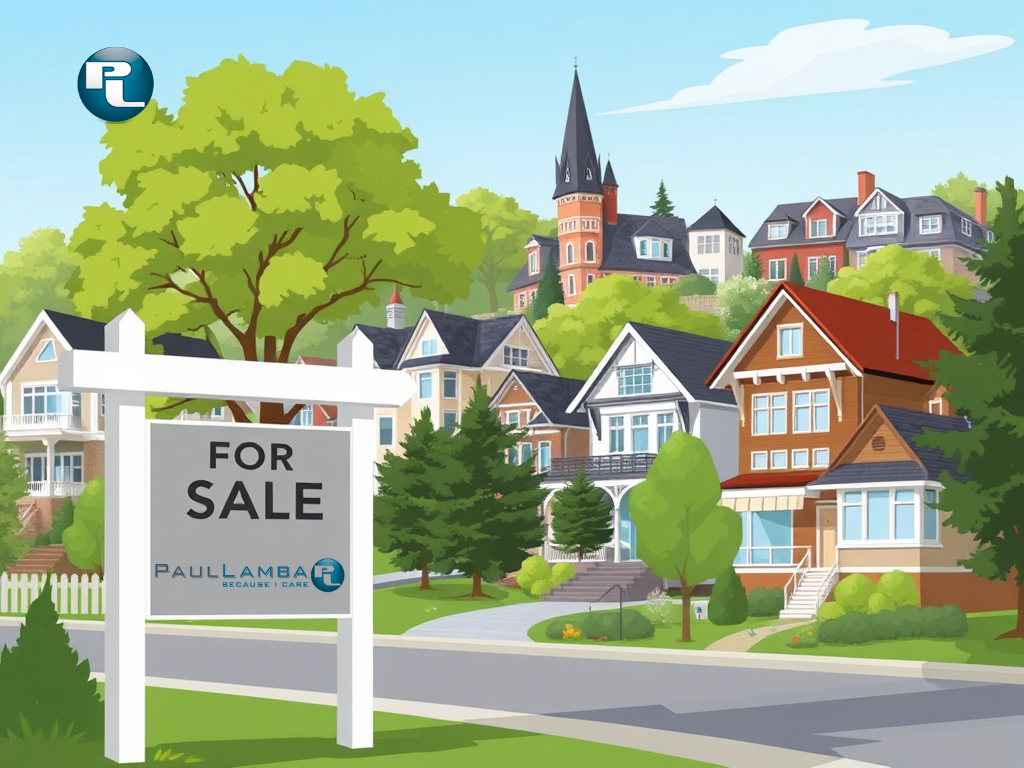The tree-lined boulevards and stately homes of Edmonton's Highlands neighborhood stand as elegant reminders of a community with deep historical roots. Nestled in the northeast quadrant of Edmonton, Highlands has evolved from humble beginnings into one of the city's most cherished heritage communities. This post explores the fascinating journey of this distinctive Edmonton neighborhood through more than a century of development and change.

Origins and Early Settlement
Long before becoming the prestigious neighborhood we know today, the land that encompasses Highlands was home to Indigenous peoples who lived and traveled along the North Saskatchewan River valley. The area's fertile soil and proximity to the river made it an attractive location for early European settlers.
The modern story of Highlands began in the early 1900s, when wealthy businessman William Magrath and his partner Bidwell Holgate purchased large tracts of land overlooking the river valley. Their vision would transform this area into Edmonton's first "country residential" community, carefully planned to attract the city's elite.
In 1912, Magrath and Holgate officially established Highlands, naming it to reflect the neighborhood's elevated position with spectacular views of the river valley below. Their ambitious development plan featured large lots, impressive architectural standards, and the city's first private golf course.
The Golden Era: 1912-1940
The years between 1912 and 1940 represent the golden era of Highlands development. During this period, many of Edmonton's most prominent citizens built magnificent homes in the neighborhood. The architectural diversity of Highlands became one of its defining characteristics, with homes showcasing styles ranging from Tudor Revival and Georgian to Arts and Crafts and Colonial Revival.
Ada Boulevard, the grand thoroughfare running along the edge of the river valley, emerged as Highlands' signature street. Its wide, tree-lined design with central boulevards created an impressive procession of stately homes with breathtaking views.
Notable early residents included:
- J.B. Holden, founder of the Northern Alberta Dairy Pool
- H.A. Friedman, prominent Edmonton businessman
- Ernest Brown, renowned photographer who documented early Edmonton
Many of these families contributed significantly to Edmonton's economic and cultural development, establishing Highlands as not just a prestigious address but a neighborhood of influence.
Mid-Century Changes
Like many established neighborhoods, Highlands experienced significant changes during the mid-20th century. The Great Depression and World War II slowed development and altered the economic landscape. Some of the grand homes were subdivided into apartments or boarding houses as economic pressures mounted.
The post-war housing boom brought new development to Highlands, with more modest homes filling in remaining lots. This era introduced architectural diversity that continues to characterize the neighborhood today. The mix of grand historic homes alongside mid-century bungalows creates the unique streetscape that defines modern Highlands.
Heritage Conservation and Renaissance
By the 1970s, there was growing recognition of Highlands' historical significance to Edmonton. Concerned residents formed the Highlands Historical Society to document and preserve the neighborhood's architectural and cultural heritage. Their efforts helped spark renewed interest in the area's historical homes.
In 1997, the City of Edmonton designated Ada Boulevard as a heritage street, acknowledging its importance to the city's architectural history. This designation helped protect the boulevard's distinctive character and encouraged heritage conservation throughout the neighborhood.
The late 20th and early 21st centuries brought a renaissance to Highlands. Young families and history enthusiasts began purchasing and restoring the neighborhood's heritage homes. This revitalization transformed Highlands once again, this time into a thriving community that celebrates its historical roots while embracing modern urban living.
Highlands Today: A Living Heritage Community
Today, Highlands stands as one of Edmonton's premier heritage communities. The neighborhood continues to attract residents who value its historical character, mature tree canopy, and strong sense of community. The Highlands Historical Foundation offers walking tours that showcase the area's significant homes and share stories of early residents who shaped Edmonton's development.
The commercial heart of Highlands along 112 Avenue features locally-owned businesses housed in beautifully maintained historical buildings. The Highlands Golf Club, though no longer private, continues to operate on its original grounds, maintaining a connection to the neighborhood's earliest days.
Community events like the annual Highlands Historical Festival celebrate the area's rich heritage while fostering connections among current residents. The Highlands Community League, one of Edmonton's oldest, continues to advocate for preservation while supporting neighborhood enhancement projects.
Architectural Treasures
Highlands is home to numerous architectural gems that illustrate Edmonton's early development:
- The Holgate Residence (1912) - A magnificent Arts and Crafts style home built for one of the neighborhood's founders
- The Magrath Mansion (1913) - Perhaps the most famous residence in Highlands, this 14,000 square foot home showcases Edwardian Classical Revival architecture at its finest
- Ernest Brown House (1912) - A distinguished Colonial Revival home that housed the photographer's extensive collection of early Edmonton images
- La Boheme Restaurant Building (1913) - Originally a corner store, this commercial building has been beautifully preserved and now houses one of Edmonton's beloved restaurants
These structures and dozens more create an outdoor museum of early 20th-century architecture that makes Highlands a living testament to Edmonton's history.
Looking Forward While Honoring the Past
As Edmonton continues to grow and evolve, Highlands maintains a delicate balance between preservation and progress. The neighborhood has embraced sensitive infill development that respects historical context while meeting modern housing needs. Heritage designation provides protection for significant properties while allowing for thoughtful updates.
Community-led initiatives focus on sustainable practices like urban gardening and active transportation that complement the neighborhood's historical character. The Highlands Community League continues to work with city planners to ensure that new development enhances rather than diminishes the area's unique identity.
Conclusion
The evolution of Highlands from an exclusive enclave of Edmonton's elite to a diverse heritage community reflects the broader history of Edmonton itself. Through economic booms and busts, periods of growth and decline, Highlands has adapted while maintaining connections to its storied past.
For visitors and Edmonton residents alike, a stroll through Highlands offers a glimpse into the city's architectural heritage and the stories of the people who shaped its development. As one of Edmonton's most distinctive historical neighborhoods, Highlands continues to contribute to the rich tapestry that makes Edmonton a city of diverse and characterful communities.
Whether you're a history enthusiast, architecture lover, or simply appreciate beautiful neighborhoods, Highlands deserves a place on your list of Edmonton's must-visit destinations.
Are you familiar with Highlands or other historical neighborhoods in Edmonton? Share your experiences in the comments below!
Posted by Paul Lamba on
Leave A Comment